 W
WThe Arctic ground squirrel is a species of ground squirrel native to the Arctic and Subarctic of North America and Asia. People in Alaska, particularly around the Aleutians, refer to them as "parka" squirrels, most likely because their pelt is good for the ruff on parkas and for clothing.
 W
WBison latifrons is an extinct species of bison that lived in North America during the Pleistocene epoch ranging from Alaska to Mexico. This species of bison was the largest and heaviest ever to live in North America. B. latifrons thrived in North America for about 200,000 years, but became extinct some 20,000–30,000 years ago, at the beginning of the last glacial maximum.
 W
WThe black-capped fruit bat is a species of megabat in the monotypic genus Chironax.
 W
WThe brown-throated sloth is a species of three-toed sloth found in the Neotropical realm of Central and South America.
 W
WThe common kusimanse, also known as the long-nosed kusimanse or simply cusimanse, is a small, diurnal kusimanse or dwarf mongoose. Of three subfamilies of Herpestidae, the kusimanse is a member of Mungotinae, which are small and very social.
 W
WDasyproctidae is a family of large South American rodents, comprising the agoutis and acouchis. Their fur is a reddish or dark colour above, with a paler underside. They are herbivorous, often feeding on ripe fruit that falls from trees. They live in burrows, and, like squirrels, will bury some of their food for later use.
 W
WThe greater Egyptian gerbil is a small rodent in the family Muridae. It is native to northern Africa where it inhabits sandy deserts, semi-arid areas and oases. It is a common species, and the International Union for Conservation of Nature has rated its conservation status as being of "least concern".
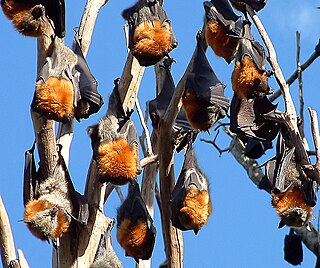 W
WThe grey-headed flying fox is a megabat native to Australia. The species shares mainland Australia with three other members of the genus Pteropus: the little red P. scapulatus, spectacled P. conspicillatus, and the black P. alecto.
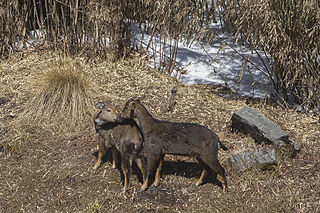 W
WThe Himalayan goral is a bovid species found across the Himalayas. It is listed as Near Threatened on the IUCN Red List because the population is thought to be declining significantly due to habitat loss and hunting for meat.
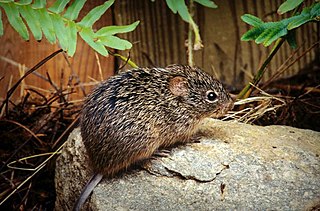 W
WThe hispid cotton rat is a rodent species long thought to occur in parts of South America, Central America, and southern North America. However, recent taxonomic revisions, based on mitochondrial DNA sequence data, have split this widely distributed species into three separate species. The southern edge of the S. hispidus distribution is likely near the Rio Grande, where it meets the northern distribution of S. toltecus. The northern extent of S. hispidus distribution is to the Platte River in Nebraska and from Arizona to Virginia. Adult size is total length 202–340 mm (7.9–13 in); tail 87–122 mm (3.4-4.8 in), frequently broken or stubbed; hind foot 29–35 mm (1-1.3 in); ear 16–20 mm (0.6-0.9 in); mass 50-250 g (1.7-9 oz). They have been used as laboratory animals.
 W
WThe hog badger, also known as the greater hog badger, is a terrestrial mustelid native to Central and Southeast Asia. It is listed as Vulnerable in the IUCN Red List of Threatened Species because the global population is thought to be declining due to high levels of poaching.
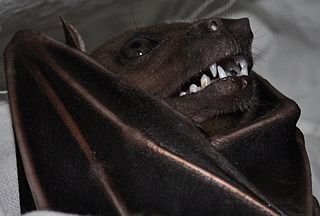 W
WThe Indonesian short-nosed fruit bat is a species of megabat in the family Pteropodidae. It is endemic to Indonesia, and has three subspecies:C. t. major C. t. terminus C. t. titthaecheilus
 W
WThe long-winged tomb bat is a species of sac-winged bat in the family Emballonuridae.
 W
WThe masked flying fox, Moluccan masked flying fox or masked fruit bat, is a species of flying fox in the family Pteropodidae. It is endemic to Indonesia. It is part of a species complex of closely related species. The species is hunted.
 W
WThe moor macaque is a macaque with brown/black body fur with a pale rump patch and pink bare skin on the rump. It is about 50–58.5 cm long, and eats figs, bamboo seeds, buds, sprouts, invertebrates and cereals in tropical rainforests. It is sometimes called "dog-ape" because of its dog-like muzzle, although it is no more closely related to apes than any other Old World monkey is. It is endemic to the island of Sulawesi in Indonesia.
 W
WThe North American brown lemming is a small North American lemming. Originally called the Siberian brown lemming they were later formed into two distinct species.
 W
WThe Nubian ibex is a desert-dwelling goat species found in mountainous areas of northern and northeast Africa, and the Middle East. Its range is within Algeria, Egypt, Ethiopia, Eritrea, Israel, Jordan, Lebanon, Oman, Saudi Arabia, Sudan, and Yemen. It is historically considered to be a subspecies of the Alpine ibex, but is increasingly considered a specifically distinct species. The wild population is estimated at 1,200 individuals.
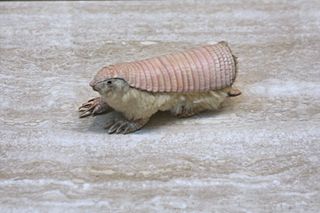 W
WThe pink fairy armadillo or pichiciego is the smallest species of armadillo, first described by Richard Harlan in 1825. This solitary, desert-adapted animal is endemic to central Argentina and can be found inhabiting sandy plains, dunes, and scrubby grasslands.
 W
WThe pond bat is a species of vesper bat. It is found in Eurasia from France to Russia and Kazakhstan.
 W
WThe red panda is a mammal species native to the eastern Himalayas and southwestern China. It is listed as Endangered on the IUCN Red List because the wild population is estimated at fewer than 10,000 mature individuals and continues to decline due to habitat loss and fragmentation, poaching, and inbreeding depression. Despite its name, it is not closely related to the giant panda.
 W
WRüppell's fox, also called Rüppell’s sand fox, is a fox species living in desert and semi-desert regions of North Africa, the Middle East, and southwestern Asia. It has been listed as Least Concern on the IUCN Red List since 2008. It is named after the German naturalist Eduard Rüppell.
 W
WThe Ryukyu flying fox or Ryukyu fruit bat is a species of megabat in the family Pteropodidae. It is found in Japan, Taiwan, and the Batanes and Babuyan Islands of the Philippines. Its natural habitats are subtropical or tropical dry forests and subtropical or tropical swamps. It is threatened by habitat loss and by hunting for food and the IUCN classify it as "Vulnerable".
 W
WThe soprano pipistrelle is a small bat that in taxonomy was only formally separated from the common pipistrelle in 1999. It is possible that these two groups diverged from one another in the Mediterranean, and that is why Pipistrellus pygmaeus has the ability to thermoregulate at temperatures as high as 40 degrees Celsius.
 W
WThe spectacled bear, also known as the Andean bear, Andean short-faced bear, or mountain bear and locally as jukumari, ukumari (Quechua) or ukuku, is the last remaining short-faced bear. Its closest relatives are the extinct Florida spectacled bear, and the giant short-faced bears of the Middle to Late Pleistocene age. Spectacled bears are the only surviving species of bear native to South America, and the only surviving member of the subfamily Tremarctinae. The species is classified as Vulnerable by the IUCN because of habitat loss.